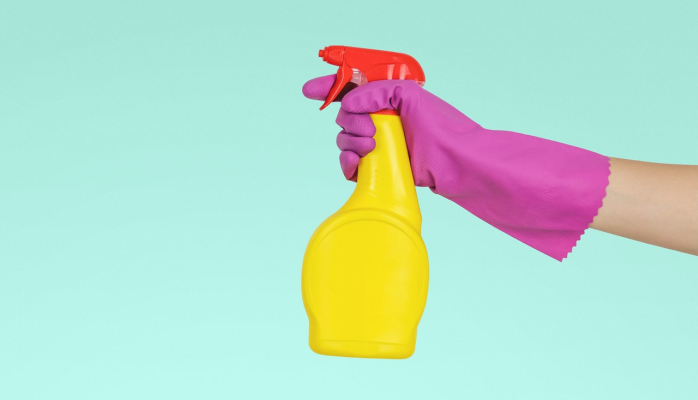
There has been a lot of confusion about how to clean during the pandemic. Fear of catching COVID-19 has resulted in much panic and led people to spray and wipe down anything and everything in the home with the strongest chemicals they can find. One of the most popular options has been hospital-grade disinfectant, with people rushing to get their hands on as much of it as they can. When panic-buying was at its peak earlier in the year, there was even a shortage of hospital-grade disinfectants. Industry organisations around the world were forced to come out and urge the public and commercial cleaners to minimise unnecessary use of the disinfectants so that enough stock was available for the medical and healthcare sector.
Now, as people strive to adapt to a new norm in which viruses like COVID-19 exist, domestic use of these toxic chemicals and hospital-grade disinfectants continues. But what implications is this overuse really having? And is it doing more harm than good when it comes to our health and wellbeing?
We know cleaning chemicals can be toxic. And given the extensive sanitation requirements and abundance of chemicals being used in the current climate, we need to consider the impact they’re having on indoor air quality, the damage they’re causing to property, and, most alarmingly, the short and long-term effects they’re having on our health. Throughout this year, we’ve been hearing an increasing number of reports of cracked skin, respiratory problems, children with chemical burns, and people hospitalised as a result of overuse of these disinfectants and chemical incidences. Furthermore, scientists are concerned that bugs are becoming resistant to disinfectants, which has the possibility to create a new strain of superbugs.
Why you need to rethink the use of disinfectants in your home
- Disinfectants can stay on surfaces long after you have cleaned with them, exposing people and animals to potential danger. Furthermore, if you’re using a disinfectant on kitchen counters, dining tables or anywhere else food is prepared or served, you’re increasing the chances of chemical contamination.
- 1 in 5 Australians suffers from chemical sensitivities. Excess or incorrect usage of toxic disinfectants on surfaces in and around the home or workplace could be risking the health of a loved one, friend, colleague, neighbour, or anyone else who comes into contact with it.
- Potent quaternary disinfectants, once restricted to hospital settings, are now being used in domestic environments. These have been studied by toxicologists around the world, with concerns they may be endocrine disruptors.
- One of the leading triggers for asthma, headaches or reactions to chemicals come from fragrances. Given the fragrance industry is unregulated, many scented chemicals and disinfectants have hidden toxins lurking in them. In fact, one fragrance can be made up of up to 400 synthetic chemicals and there is no requirement to list individual ingredients. This includes ‘green’ cleaning chemicals. While they may be slightly better for the environment, they are not necessarily better for your health. Because, when it comes down to it, they’re still chemicals.
It’s time for people to rethink their cleaning habits and embrace chemical-free alternatives that eliminate germs without posing a risk to people or the planet.
The iClean mini is a scientifically-proven all-in-one cleaner and sanitiser that has no toxic chemicals and no fragrances. It transforms tap water into Stabilised Aqueous Ozone, which kills 99.99% of germs and bacteria.